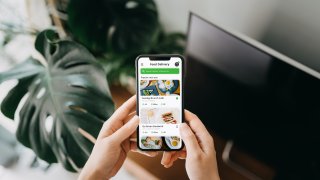
From Big Hot Dog Energy to Pimp My Pasta, there’s a growing wave of restaurants in the U.S. that are luring patrons with clickbait names and glossy imagery. But you can’t dine in them, because in the physical world they don’t exist.
“There’s no signage, no seating, no cute walk-up window,” said Jean Chick, a senior consultant specializing in food and beverage at consulting firm Deloitte. Unlike full-service restaurants, these virtual endeavors prioritize delivery and pick-up. They can be “ghost kitchens” — which operate out of trailers or commercial warehouses — or, increasingly, alter egos for existing restaurants known as virtual restaurants.
In New York City, a sample of 1,656 Uber Eats listings showed that more than 1 in 5 appear to be virtual, a trend repeated across each of the 12 cities NBC News examined, according to an analysis of restaurant listings. Data shows there are now tens of thousands of virtual restaurants, flooding the marketplace and prompting at least one delivery app company to make plans to rein in some restaurants.
While these online listings drive business revenue through exposure and often bring in new customers, experts warn that unoriginal listings can crowd the dining landscape.
Get Tri-state area news and weather forecasts to your inbox. Sign up for NBC New York newsletters.
The prevalence of virtual restaurants varied among the cities analyzed, ranging from 1 in every 10 in Cleveland to nearly 1 in every 3 restaurants in Nashville, Tennessee.
Read the full story on NBCNews.com here.

